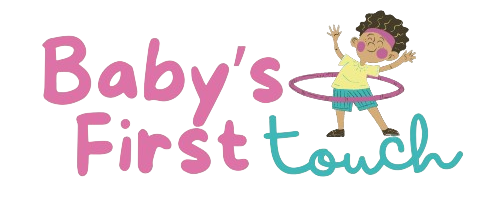Table of Contents
- What Exactly is Cultural Competence (And Why It’s Not Just ‘Being Nice’)
- The Urgent Need for Cultural Competence in Our Connected World
- Peeling Back the Layers: Understanding Cultural Differences
- The Journey Starts Within: Cultivating Self-Awareness
- Practical Strategies: How to Teach and Learn Cultural Competence
- Navigating the Pitfalls: Common Challenges and How to Overcome Them
- Measuring What Matters: Assessing Progress in Cultural Competence
- Conclusion: Building Bridges, Not Walls
Teaching Cultural Competence: Understanding Different Cultures in Our Interconnected World
Ever felt like you’ve accidentally stepped on someone’s toes, culturally speaking? Maybe a joke fell flat, a gesture was misunderstood, or a direct question felt intrusive? In our increasingly globalized world, interacting with people from diverse backgrounds isn’t just common; it’s inevitable. From the classroom to the boardroom, from our neighborhoods to our online communities, understanding different cultures is no longer a ‘nice-to-have’ skill – it’s an absolute necessity. But how do we move beyond simply knowing *that* cultures differ, to truly understanding *how* they differ and interacting effectively and respectfully? This is where teaching cultural competence comes in.
This isn’t just about learning lists of dos and don’ts for different countries. It’s a deeper, more dynamic process of developing awareness, knowledge, and skills to navigate cross-cultural interactions successfully. It’s about building bridges of understanding, fostering empathy, and unlocking the incredible potential that diversity brings. Ready to explore how we can cultivate this crucial skill in ourselves and others? Let’s dive in.
What Exactly is Cultural Competence (And Why It’s Not Just ‘Being Nice’)
First things first, let’s clear up what cultural competence truly means. It’s often used interchangeably with terms like ‘cultural sensitivity’ or ‘cultural awareness,’ but it encompasses more. Think of it as a developmental process, a journey rather than a destination.
Cultural competence is the ability to understand, communicate with, and effectively interact with people across cultures. It involves recognizing your own cultural biases, developing knowledge of different cultural practices and worldviews, and applying that knowledge to interact respectfully and effectively.
Being ‘nice’ or ‘tolerant’ is a starting point, but it’s passive. Cultural competence is active. It requires effort, learning, and adaptation. It’s about having the capacity to function effectively as an individual and an organization within the context of the cultural beliefs, behaviors, and needs presented by consumers and their communities.
Beyond Awareness: The Components of Competence
Developing cultural competence isn’t a single action but involves integrating several key components:
- Awareness: Recognizing your own cultural background, values, biases, and assumptions. Understanding how these affect your perceptions and interactions with others.
- Attitude/Mindset: Approaching cultural differences with openness, curiosity, humility, and respect. Valuing diversity and being willing to learn from others without judgment. This includes embracing cultural humility – recognizing the limits of your own knowledge and being open to learning from others about their culture.
- Knowledge: Seeking and acquiring specific information about different cultural practices, communication styles, values, histories, and social structures. This isn’t about becoming an expert on every culture but understanding key frameworks and being willing to learn specifics when needed.
- Skills: Developing the practical abilities needed for effective cross-cultural communication and interaction. This includes verbal and non-verbal communication skills, active listening, empathy, adaptability, conflict resolution across cultures, and relationship building.
True cultural competence integrates all these elements, allowing individuals and groups to engage meaningfully and respectfully in diverse settings.

The Urgent Need for Cultural Competence in Our Connected World
Why is the focus on teaching cultural competence intensifying now? Several interconnected factors make it more critical than ever before.
Globalization and Interconnectedness
Technology has shrunk the world. We collaborate on international projects, consume global media, travel more frequently (pandemics permitting), and interact online with people from every corner of the globe. Business supply chains are global, research is international, and social movements spread across borders. Navigating this interconnected landscape requires a sophisticated level of intercultural understanding.
Thriving in Diverse Workplaces and Communities
Our societies, workplaces, and classrooms are becoming increasingly diverse due to migration, mobility, and demographic shifts. This diversity is a tremendous asset, bringing varied perspectives, creativity, and innovation. However, harnessing these benefits requires creating inclusive environments where everyone feels valued and understood. Cultural competence is key to effective teamwork, leadership, customer service, patient care, and education in these diverse settings. It’s fundamental to building strong, cohesive communities and successful organizations based on diversity and inclusion principles.
Avoiding Costly Misunderstandings
Cultural misunderstandings aren’t just awkward; they can have serious consequences. In business, they can lead to failed negotiations, damaged relationships, and marketing blunders. In healthcare, they can result in misdiagnosis, poor treatment adherence, and health disparities. In diplomacy and international relations, the stakes are even higher. Developing cultural competence helps minimize these risks by fostering clearer communication and mutual understanding.
Peeling Back the Layers: Understanding Cultural Differences
To interact effectively across cultures, we need frameworks to understand *how* cultures tend to differ. It’s crucial to remember these are generalizations and tendencies, not rigid rules applying to every individual within a culture. Stereotyping is a danger we must actively avoid (more on that later!). However, understanding common cultural dimensions can provide valuable insights.
Key Cultural Dimensions (Brief Overview)
Researchers like Geert Hofstede and Edward T. Hall developed influential models to describe cultural variations:
- Power Distance: The extent to which less powerful members of society accept and expect that power is distributed unequally. High power distance cultures accept hierarchy more readily than low power distance cultures.
- Individualism vs. Collectivism: Do people prioritize individual goals and autonomy (individualism) or group harmony and interdependence (collectivism)?
- Masculinity vs. Femininity: This dimension contrasts cultures valuing assertiveness, competition, and material success (masculinity) with those valuing cooperation, modesty, caring for the weak, and quality of life (femininity).
- Uncertainty Avoidance: How comfortable is a culture with ambiguity and unstructured situations? High uncertainty avoidance cultures prefer clear rules and procedures, while low uncertainty avoidance cultures are more tolerant of ambiguity.
- Long-Term vs. Short-Term Orientation: Do people focus on future rewards, perseverance, and thrift (long-term orientation) or on the present and past, respecting tradition and fulfilling social obligations (short-term orientation)?
- Indulgence vs. Restraint: The extent to which societies allow relatively free gratification of basic human drives related to enjoying life (indulgence) versus suppressing gratification through strict social norms (restraint).
- High-Context vs. Low-Context Communication (Hall): In high-context cultures, communication relies heavily on shared context, nonverbal cues, and implicit understanding. In low-context cultures, communication is explicit, direct, and relies primarily on words.
Understanding these dimensions can help anticipate potential differences in communication styles, decision-making processes, and workplace expectations.
Communication Styles Across Cultures
Differences extend beyond context. Consider:
- Directness vs. Indirectness: How explicitly is disagreement or negative feedback expressed?
- Formality vs. Informality: The appropriate level of deference, use of titles, and casualness in interaction.
- Non-Verbal Communication: Variations in eye contact, personal space, gestures, silence, and tone of voice. What’s polite in one culture might be rude in another.
Values, Beliefs, and Norms
Core values (e.g., regarding family, time, religion, work-life balance) shape behavior and expectations. Understanding these deeper layers is crucial for building trust and rapport across cultures.

The Journey Starts Within: Cultivating Self-Awareness
Perhaps the most critical – and often overlooked – step in developing cultural competence is turning the lens inward. Before we can understand others, we must understand ourselves.
Recognizing Your Own Cultural Lens
We all view the world through a ‘cultural lens’ shaped by our upbringing, experiences, nationality, ethnicity, family, education, and countless other factors. This lens influences our values, beliefs, assumptions, communication style, and definition of ‘normal.’ What seems like common sense to us might be culturally specific. The first step is acknowledging this lens exists and actively questioning our own defaults.
Ask yourself:
- What are the core values I was raised with?
- How does my culture typically approach communication (direct/indirect, formal/informal)?
- What assumptions do I make about people based on their background?
- How do I react when my expectations based on my own culture aren’t met?
Identifying and Challenging Biases
We all have biases – conscious (explicit) and unconscious (implicit). These mental shortcuts help us process information quickly, but they can lead to prejudice and discrimination when based on stereotypes about cultural groups. Unconscious biases are particularly insidious because we’re often unaware of them. Developing cultural competence requires the courage to identify our biases and actively challenge them. This involves paying attention to our snap judgments, questioning stereotypes we hold, and seeking out information and experiences that contradict our biases.
Practical Strategies: How to Teach and Learn Cultural Competence
Developing cultural competence is an ongoing process that can be fostered in various settings. Here are practical teaching strategies and learning approaches:
In the Classroom: Fostering Global Citizens
Educational institutions play a vital role in preparing students for a diverse world:
- Curriculum Integration: Embed diverse perspectives across all subjects, not just social studies. Use literature, history, science examples, and art from various cultures.
- Diverse Materials: Ensure textbooks, reading materials, and media represent a wide range of cultural experiences authentically and respectfully.
- Experiential Learning: Organize cultural exchange programs (virtual or in-person), invite guest speakers from different backgrounds, facilitate simulations or role-playing scenarios focusing on cross-cultural dilemmas.
- Critical Discussions: Create safe spaces for students to discuss cultural differences, stereotypes, prejudice, and current events related to diversity and inclusion. Teach critical thinking skills to analyze cultural information.
- Language Learning: Encourage learning additional languages, as language is deeply intertwined with culture.
- Focus on Empathy: Use activities and discussions designed to help students understand and share the feelings of others from different backgrounds.
In the Workplace: Building Inclusive Teams
Organizations benefit immensely from culturally competent teams:
- Effective DEI Training: Move beyond one-off, compliance-focused training. Invest in ongoing, interactive workshops focusing on self-awareness, understanding cultural dimensions, inclusive communication, and bias mitigation. Training should be practical and relevant to employees’ daily work.
- Inclusive Leadership: Train managers and leaders to model culturally competent behavior, manage diverse teams effectively, and champion diversity and inclusion initiatives.
- Mentorship & Sponsorship Programs: Pair employees from different cultural backgrounds to foster mutual learning and understanding.
- Cross-Cultural Teams & Projects: Intentionally create opportunities for employees from diverse backgrounds to collaborate.
- Review Policies & Practices: Examine recruitment, promotion, performance evaluation, and other HR processes for potential bias and ensure they support inclusivity.
- Celebrate Diversity: Acknowledge and celebrate various cultural holidays and traditions represented within the workforce, ensuring authenticity and avoiding tokenism.
- Provide Resources: Offer access to cultural guides, language learning tools, and employee resource groups (ERGs) focused on different cultural identities.

For Personal Growth: Becoming Culturally Adept
Cultural competence isn’t just for classrooms or offices; it enriches our personal lives:
- Travel Mindfully: When traveling, go beyond tourist traps. Engage with local communities respectfully, try to learn basic phrases, observe social norms, and be open to new experiences.
- Read Widely & Watch Diversely: Consume books, films, news, and documentaries created by people from different cultural backgrounds.
- Engage Locally: Seek opportunities to interact with people from different cultures within your own community. Attend cultural festivals, visit diverse neighborhoods, volunteer with organizations serving diverse populations.
- Learn a Language: Even basic proficiency opens doors to deeper cultural understanding.
- Practice Active Listening: Focus fully on understanding the speaker’s perspective, including unspoken cues, without interrupting or judging prematurely. Ask clarifying questions respectfully.
- Cultivate Curiosity & Humility: Approach interactions with a genuine desire to learn. Acknowledge that you don’t know everything and be willing to ask questions and admit mistakes.
- Seek Feedback: If you have trusted friends or colleagues from different backgrounds, ask for feedback on your cross-cultural communication style (do this thoughtfully and respectfully).
Navigating the Pitfalls: Common Challenges and How to Overcome Them
The path to cultural competence isn’t always smooth. Awareness of common challenges can help us navigate them more effectively:
Avoiding Stereotypes and Generalizations
While understanding cultural dimensions is helpful, it’s vital not to stereotype. Cultural frameworks describe tendencies, not absolutes. Individuals within any culture vary greatly. Always treat people as individuals first, using cultural knowledge as a potential guide, not a rigid script. Be aware of confirmation bias – seeking information that confirms existing stereotypes.
Solution: Practice ‘conscious noticing’ – observe individual behaviors without immediately attributing them to culture. Get to know people as individuals. Use cultural information as a starting hypothesis, not a conclusion.
Moving Beyond Tokenism
Celebrating cultural holidays or having a diverse workforce isn’t enough if deeper inclusion and equity issues aren’t addressed. Tokenism involves making symbolic gestures towards inclusivity without making meaningful changes to power structures or addressing systemic biases.
Solution: Focus on systemic change alongside cultural celebrations. Ensure diverse voices are genuinely included in decision-making. Promote equity in opportunities and outcomes, not just representation.
Addressing Resistance and Discomfort
Learning about cultural differences and confronting our own biases can be uncomfortable. Some individuals may resist diversity efforts, fearing change or feeling blamed. Others might fear saying the wrong thing.
Solution: Create psychologically safe learning environments where mistakes are seen as learning opportunities. Frame cultural competence development as a shared journey benefiting everyone. Acknowledge discomfort as a natural part of growth. Focus on shared goals and the positive outcomes of improved cross-cultural communication and collaboration.
Measuring What Matters: Assessing Progress in Cultural Competence
How do we know if efforts to teach and learn cultural competence are working? Measurement can be tricky, as it involves changes in attitudes, knowledge, and behavior. However, progress can be assessed through:
- Self-Assessment Tools: Questionnaires designed to gauge individuals’ self-perceived levels of cultural awareness, knowledge, and skills (e.g., Intercultural Development Inventory – IDI).
- Knowledge Tests: Assessing understanding of specific cultural concepts or information relevant to a particular context (e.g., healthcare providers’ knowledge of culturally specific health beliefs).
- Behavioral Observation: Observing individuals’ interactions in diverse settings (e.g., during simulations, team meetings, customer service interactions).
- Qualitative Feedback: Gathering insights through interviews, focus groups, or surveys asking about experiences with cross-cultural interactions, inclusivity, and the effectiveness of training.
- Organizational Metrics: Tracking data related to diversity representation at different levels, employee engagement scores across demographic groups, retention rates, customer satisfaction among diverse client groups, and frequency of reported cross-cultural conflicts or misunderstandings.
Combining multiple methods provides a more holistic picture of progress.

Conclusion: Building Bridges, Not Walls
In a world woven together by threads of countless cultures, the ability to navigate differences with respect, understanding, and skill is paramount. Teaching cultural competence is not merely an educational or corporate initiative; it’s a fundamental aspect of fostering a more peaceful, productive, and equitable global society.
It’s a journey that begins with self-awareness, demands ongoing learning and humility, and translates into tangible skills for effective cross-cultural communication and collaboration. Whether in our schools, workplaces, or personal lives, embracing the challenge of understanding different cultures allows us to break down barriers, challenge prejudices, and build meaningful connections.
The rewards are immense: richer relationships, more innovative teams, more inclusive communities, and a deeper appreciation for the vibrant tapestry of human experience. Let’s commit to this ongoing journey, both as learners and teachers, building bridges of understanding one interaction at a time. The future, undoubtedly, belongs to the culturally competent.



